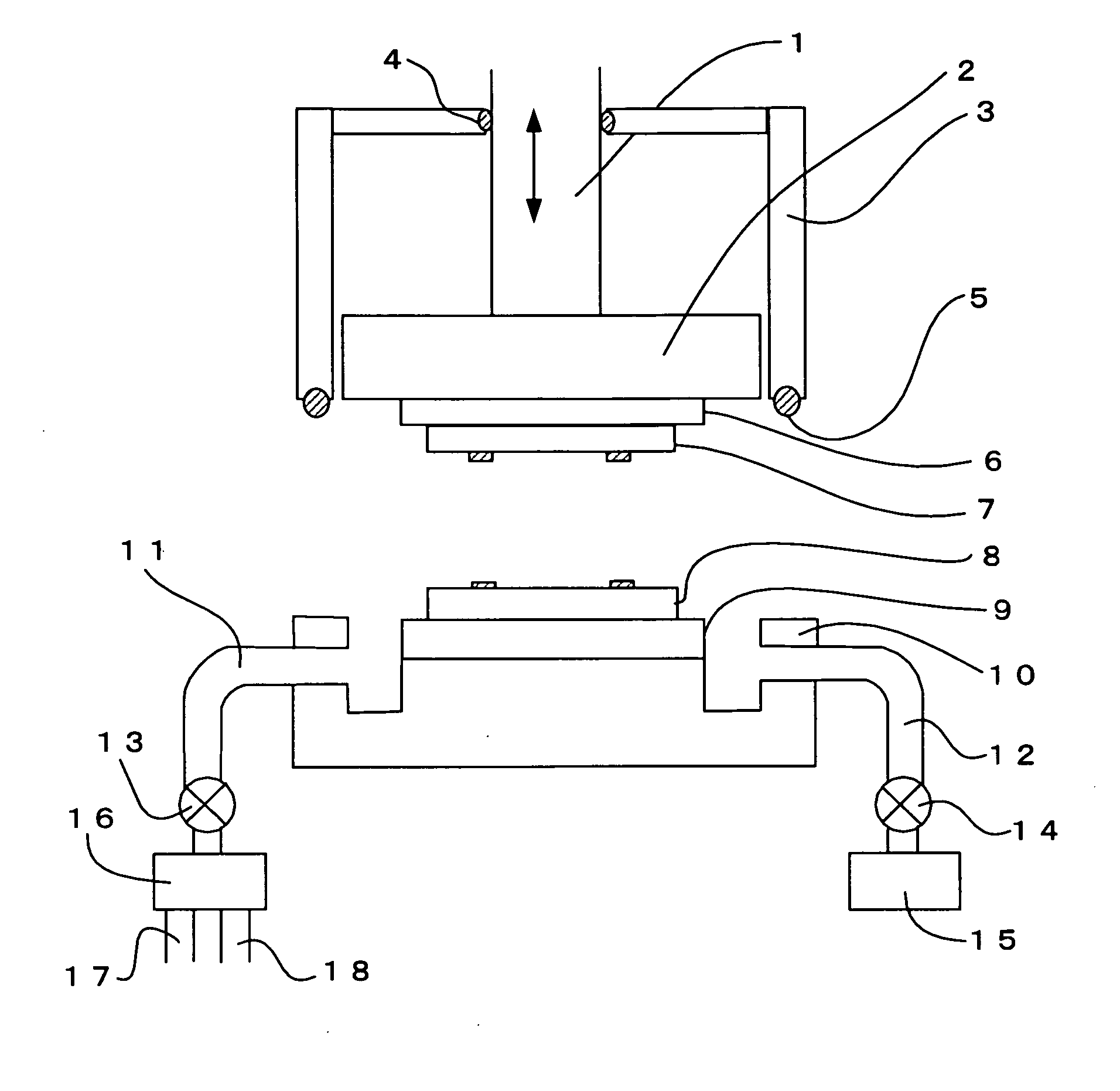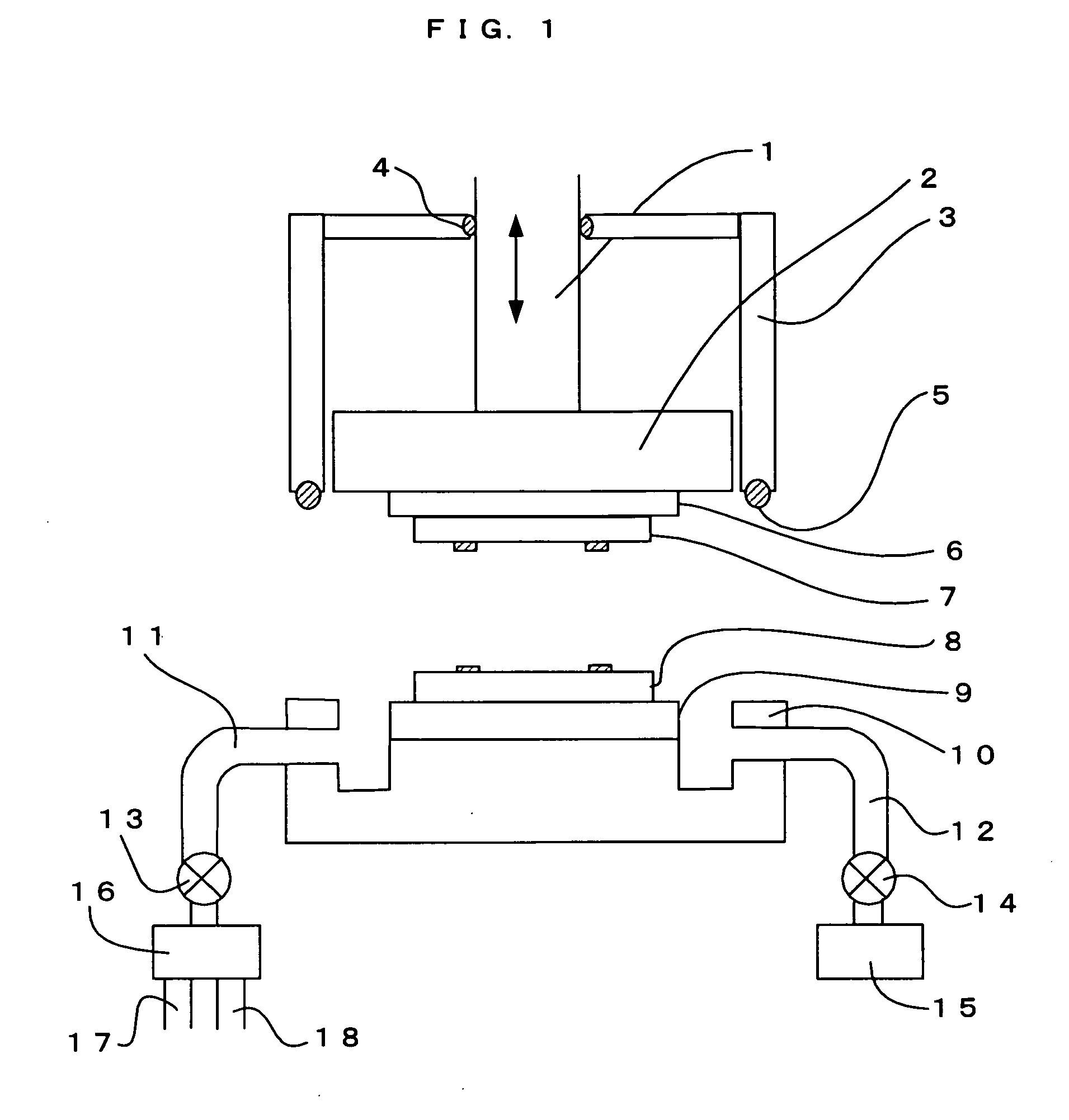Bonding method, device produced by this method, and bonding device
a technology of bonding and a bonding device, which is applied in the manufacture of microstructural devices, microstructured devices, electrical devices, etc., can solve the problems of unavoidable adhesion of organic substances to the surface of wafers and the inability to achieve firm bonding of si (semiconductor), so as to increase the bonding strength and increase the production efficiency
- Summary
- Abstract
- Description
- Claims
- Application Information
AI Technical Summary
Benefits of technology
Problems solved by technology
Method used
Image
Examples
Embodiment Construction
[0175] In this embodiment, a method and a bonding device are provided in which wafers (objects to be bonded) are surface-activated using a plasma, preliminary bonding is performed, and anodic bonding is performed in a separate main bonding step. Hereinafter, a desired embodiment of the present invention will be described with reference to the accompanying drawings. FIG. 7 illustrates a configuration according to an embodiment of the present invention in which preliminary bonding due to surface activation and main bonding due to anodic bonding are separated, thereby increasing production efficiency.
[0176] As illustrated in FIG. 7, bonding surfaces are surface-activated using a plasma treatment device A (energy wave treatment device), room temperature preliminary bonding is performed in a vacuum using a preliminary bonding device B, and main bonding with heating is performed in the atmospheric air using a plurality of main bonding devices C (three in FIG. 7), which are used in balanc...
PUM
| Property | Measurement | Unit |
|---|---|---|
| Temperature | aaaaa | aaaaa |
| Nanoscale particle size | aaaaa | aaaaa |
| Temperature | aaaaa | aaaaa |
Abstract
Description
Claims
Application Information
 Login to View More
Login to View More - R&D
- Intellectual Property
- Life Sciences
- Materials
- Tech Scout
- Unparalleled Data Quality
- Higher Quality Content
- 60% Fewer Hallucinations
Browse by: Latest US Patents, China's latest patents, Technical Efficacy Thesaurus, Application Domain, Technology Topic, Popular Technical Reports.
© 2025 PatSnap. All rights reserved.Legal|Privacy policy|Modern Slavery Act Transparency Statement|Sitemap|About US| Contact US: help@patsnap.com



